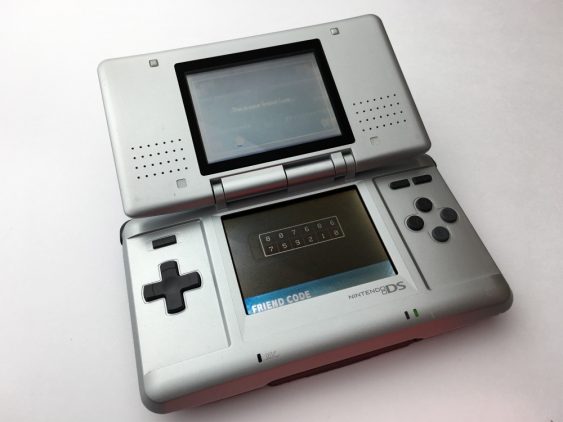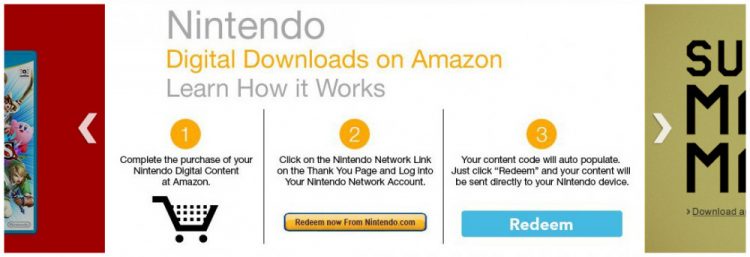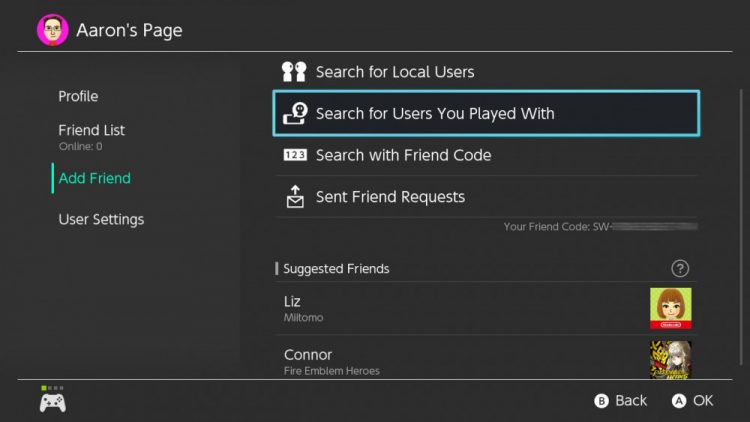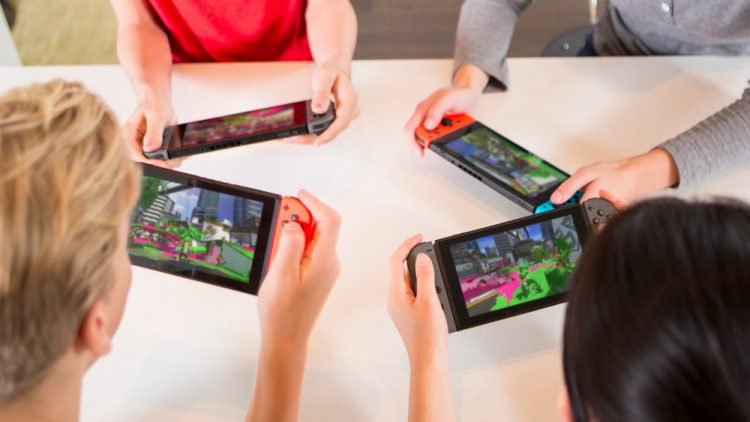There’s no sugar-coating it: Nintendo is bad at the internet. Their online services have hardly been robust, and what features they do offer are limited and often frustrating. When they announced a partnership with Japanese mobile game developer DeNA in 2015 that included the co-development of a new membership service compatible with games across all of their platforms, it gave many gamers hope that Nintendo would finally be catching up to Xbox Live and the PlayStation Network. Although the Switch launched without online multiplayer support and a minimal eShop, I’ve had a few experiences that have reinforced for me that hope for a modern online experience in the coming months.
Let’s look back at the bad, first. For years, Nintendo has used the infamous Friend Code system, which employs twelve digit numerical identifiers instead of usernames. Friends were only confirmed once both parties had entered each other’s codes into their respective consoles, but online interactivity was so limited anyway that this was rarely worthwhile. Most Nintendo titles that feature matchmaking tend to handle that in-game, and trading Friend Codes really only extended access for other players to your town in Animal Crossing, or otherwise enabled voice chat for a handful of 3DS titles. It’s a far cry from what’s available on other platforms. With
It’s a far cry from what’s available on other platforms. With Xbox Live, you can easily find and add friends by searching usernames or sending requests based on recently played games. Players can form parties from their home menus, invite others to games already in progress, and compare skills through achievements and leaderboards.

Nintendo initially tied digital purchases to hardware, and users had to contact the Big N directly in order to access previously downloaded content if a console was lost or broken. The eShops are still separate entities for the 3DS and Wii U (although they share the wallet system now), and are cumbersome and difficult to search. Virtual Console games are treated as separate products between platforms, so buying Super Mario Bros. 3 on your 3DS doesn’t give you access to it on your Wii U, and vice-versa. VC games bought on the Wii weren’t natively supported on the Wii U, either, and had to be re-purchased if you didn’t want to boot your Wii U into legacy mode.

And finally, when it came time to dip their toes into social media sharing, Nintendo opted to reinvent the wheel by making Miiverse, a Twitter/Facebook hybrid, rather than connecting directly to those already existing services. They were initially cold toward the idea of streaming, but Mario Kart 8 ended up featuring YouTube integration that allows players to upload clips from the game directly to the site. All uploaded clips are automatically flagged by YouTube’s ContentID service, though, meaning that you can’t monetize your own gameplay clips — that is, unless you sign up for the controversial Nintendo Creators Program.
That’s a lot that needs improvement, but I think I’m seeing indications that Nintendo is finally getting on the right track. The new My Nintendo program launched and has been integrated with the Nintendo Network, and digital purchases are now going to be tied to user accounts instead of hardware. You’ll be able to re-download content after initializing a system and signing in with your Nintendo Network ID. Last year, Amazon started selling digital downloads for Nintendo systems, and their catalog now includes Switch titles.
On launch day, I bought Snipperclips, Fast RMX, and the DLC pass for Breath of the Wild on Amazon, and was actually really pleasantly surprised by the experience. I was prompted to link my Amazon account and Nintendo Network ID (which is accomplished by singing into your Nintendo Network ID and clicking a single confirmation button), and by the time I had done so and walked from my office back to my living room, the two full games had been added to my Switch’s home screen and were downloading. I only got a redemption code that had to be manually entered for Breath of the Wild’s DLC, but it was still nice to be able to use an Amazon gift card for that instead of my eShop wallet.

Friend Codes do still exist, but it’s no longer required that both people enter them. There are also a number of other, much easier ways to add friends to your Switch. Local players can be added and immediately confirmed when you and they both scan for nearby systems and then tap the same symbol on your screens. There’s also an option for sending requests to players from recent online games as well, which won’t be useful until online multiplayer support is live. To me, this indicates that Nintendo is anticipating a much more active online community than their previous consoles enjoyed. Your Switch will also generate a list of suggested friends based on ones you’ve already added in Nintendo’s mobile games (Miitomo, Super Mario Run, and Fire Emblem Heroes), which is handy since those games allow for you to add friends from Facebook and Twitter.

And speaking of social media, you can directly link your Switch to your Facebook and Twitter accounts. The left joy-con and Pro Controller both feature a capture button for taking screenshots, which you can post right to your wall or in a tweet. This button will supposedly allow for gameplay capture sometime in the future, likely functioning similarly to Mario Kart 8‘s YouTube upload feature.
Lookin' good #BreathoftheWild #NintendoSwitch pic.twitter.com/sTTAb6h69T
— Aaron (@mechanikism) March 22, 2017
While the current Switch eShop is fairly sparse, it’s clearly a placeholder. Maybe when online multiplayer support launches, a more functional eShop with categories, searching, and demos will go live. I’m fully expecting to have to re-purchase my Virtual Console games at this point, but hopefully this will be the last time since they’ll now be tied to my user account. You can now browse, make purchases, and start downloading from the eShop while a game is suspended, which is nice and convenient.
I’m hopeful that we’ll see good things in terms of online features from Nintendo over the next few months. There will surely be some more rough patches and head-scratching decisions, but at least it looks like they’re in a better position to improve based on feedback, where past systems didn’t seem to be designed to be flexible.


